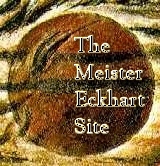|
|
||
 |
Meister Eckhart Home / Works by Meister Eckhart - Quotes / Inspired by Eckhart / Studies / The Papal Condemnation / Mail & Announcements / Links / Books |
The First German Movement In Its European Setting (1270-1350)
Page 4
In the Communion consummated in minne, the new "I" and the new "Thou" established their own kingdom of soul and body, and were the mediators of their own salvation. Walter von der Vogelweide thought the pope and all the "old" rulers were devoid of holiness and salvation. His hero, Longinus, was the manifestation of a new chivalry, the "good anchorite" of a new, evangelical Christianity. Wolfram von Eschenbach, a forerunner of Eckhart, made an elaborate, precarious, almost baroque attempt to renovate the ancient sacred cosmos (of empire, nature, and race). His kingdom of the Holy Grail and his hero, the Knight Feirefiz, were exotic products of the world of the Three Rings and of Western spiritual reform. Feirefiz was half pagan, half Christian, half Negro and half white. The idea of the Grail was a mixture of Persian symbolism, the Templar mystique of the order of knighthood, the idea of the Church of the Holy Spirit, and the society formed by the new nobility. This curious amalgam rested on the ancient faith of the Germanic world in nature and sacrament. Grave symptoms of disintegration and decadence in the political and religious spheres were evident in this poetry. It was, as in the nineteenth and twentieth centuries, a substitute for theology and philosophy.
"The terrible time", the time without an emperor, the Interregnum of 1250-74, was only one of the many interregna during the thirteenth century. All the old powers, secular and spiritual - princes, emperor and bishops - proved unable to exercise their authority, or mutually frustrated each other's attempts to do so. Strasbourg suffered for decades under the ban of the Church. In the struggle between the Emperor Ludwig and John XXII, most German cities experienced periods of interdict: Erfurt for example, for three years, Zurich for ten years, Ulm for fourteen years, and Frankfurt (later to be the capital of German nonconformism and the home of Theologia Germanica) for twenty-eight years. The city Authorities often had no choice but to force the resident clergy to perform their holy tasks and gradually they subjected the clergy to their control. A solid mass of political resistance to Rome took root in these cities. The papal policy of taxation was bitterly resented and there were protests in Mainz in 1313, Cologne in 1330, and the league of Rhineland Churches in 1355. The climax was the anticurial manifesto of the Cologne League in 1372 [4].
Cf. Meister Eckhart von Friedrich Heer ||| Mail: Heer, Tauler & nazism